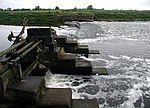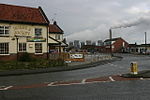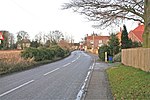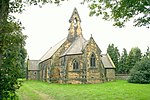Church of St Edmund King and Martyr, Kellington

The Church of St Edmund King and Martyr, Kellington, is a grade I listed 12th century church in the village of Kellington, North Yorkshire, England. Excavations at the site have revealed the 14th century tomb related to the Knights Templar, and in the 1990s, the foundations of the church were underpinned because of possible subsidence effects from the nearby Kellingley Colliery. Its separation from the village upon elevated land, makes it a local landmark and it has been commented upon throughout history. A stone with Medieval carvings upon it was found in the church and has given rise to a legend attached to it about a shepherd fighting a snake. The Kellington Serpent-Stone is one of the attractions of the church.
Excerpt from the Wikipedia article Church of St Edmund King and Martyr, Kellington (License: CC BY-SA 3.0, Authors, Images).Church of St Edmund King and Martyr, Kellington
Church Lane,
Geographical coordinates (GPS) Address External links Nearby Places Show on map
Geographical coordinates (GPS)
| Latitude | Longitude |
|---|---|
| N 53.7146 ° | E -1.1712 ° |
Address
St Edmund's
Church Lane
DN14 0SB , Kellington
England, United Kingdom
Open on Google Maps










